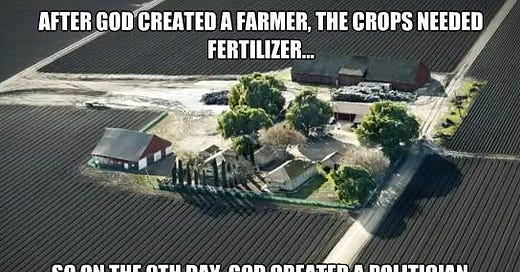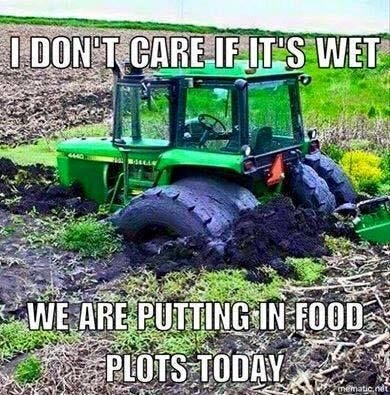Spring time on the farm means getting the tractors out of the shop and working over the soil to prepare it for planting. It also means cold hands if you don’t have circle irrigation. One of the essentials that farmers need at this point in the farming season is seeds to plant and fertilizer. Farming is both time sensitive and weather dependent. If seeds aren’t planted on time, the crop may not mature in time to harvest. If weather is cold during bloom time, crops may not get pollinated. These are just two of a multitude of conditional factors that can affect crop yield. One of the most important to farmers right now is soil condition.
There are many kinds of soil. Clay, loam, sand, silt, they all have different characteristics when it comes to working the ground and watering your crop. Different kinds of ground demand different methods of approach. You wouldn’t waste a bunch of money on liquid fertilizer if you have sandy ground. Part of understanding soil condition is taking soil samples and analyzing the nutrient content. In a typical year, amendments would be made to the soil so that farmers can plant the crops they want to plant. Amendments is the farm lingo for fertilizer. This year has been a big challenge for soil conditioning due to fertilizer costs and availability.
Many see the cost of fertilizer getting out of hand. Some farmers are able to be flexible and instead of planting corn (which is a fertilizer intensive crop) they are planting wheat or soybeans. Bloomberg highlighted this at the end of last month. This will cause the price of corn to be driven higher as less will be supplied to the market. This will cause secondary effects across the landscape. Corn goes into a lot of products and all these products will struggle to source a supply. Two of the big ones that stand out to me immediately are animal feed and ethanol. In the US, we put corn into our gas tank via ethanol. A lack of ethanol inputs would equate to an increase in ethanol costs. Legislation has been attempted in the past to eliminate the ethanol blending mandate but it has always run into opposition. If corn prices increase enough causing the cost of blending ethanol into fuel to surge, opposition to such a proposal could quickly dissipate. This could allow for more corn to go towards food products and animal feed. In the current situation, this is still a choke-point and a bidding war in corn could ensue.
Still other crops require fertilizer and many are not able to switch to other crops as easily. The squeeze higher in fertilizer products is a direct result of the tit-for-tat sanctions that the Biden administration and the Russian Federation have been lobbing at one another. Russia provides an out-sized amount of the world’s fertilizer. Together with Belarus, they hold a combined 40% of the market share of potash fertilizer. Russia also provides over 16% of nitrogen fertilizer to the export market. This doesn’t seem like much until you realize that they supply 66% of the global market for ammonium nitrate which is the key ingredient to nitrogen fertilizer.
When I could see this coming I attempted to pre-purchase fertilizer where I work from suppliers and was denied every time. No ag input company wanted to sell me fertilizer so that I could stockpile a supply. These companies know that there is a shortage and that prices will be increasing throughout the year. We’ve begun to diversify where we source our farm inputs and guess who showed up at my office.
Nutrien Ag Solutions came through with a sizable delivery. I had emphasized Nutrien (NTR) back in February and have been adding them to my portfolio as well as Mosaic (MOS). Both have performed well and I expect that to continue as they will show large increases in their earnings as fertilizer prices go up. They both have earnings reports coming out early next month (estimated date is May 2nd) for their first quarter earnings. Both also pay dividends.
The impact of these fertilizer shortages won’t be fully understood until the end of the growing season. This is when harvest yields will be realized and farmers skimping on fertilizer usage will see their yields tumble.
Another factor causing fertilizer costs to rise has been the price and availability of natural gas. The reason that Russia provides so much fertilizer to the world is that it requires natural gas to produce many of the fertilizer components (such as ammonium nitrate) and Russia has an abundant supply of natural gas. With the current disfavored position of fossil fuels in the US, natural gas development has been shunned. The continued rise in the price of natural gas will only cause the products it creates (like fertilizer) to continue to increase in price. This could cause the economy to get seriously stuck.
Finally, I wanted to touch on the FOMC minutes. Many good commentators have had the right take on the meeting notes. I think it was obvious when Brainard came out so hawkish the other day that these meeting minutes were going to reflect a more aggressive attitude towards combating inflation. I liked Michael Every of Rabobank’s take,
“Yesterday’s Fed minutes showed the gloves are off. The FOMC was close to a 50bp hike last month, only the war stopped them, but it won’t stop them ahead. Moreover, QT starts in May at a pace of $60bn a month for Treasuries and $35bn for MBS.”
The Fed knows that they are behind and need to play catch-up but I need to see actual results and decisions. The Fed typically knows how to talk the talk but when it comes to walking the walk, they leave much to be desired. Talking the talk won’t work against inflation like it does in the stock market. Action will be required. I worry that the Fed has confused the actual economy with a derivative of the economy (the stock and bond market). Here’s an example of my frustration with the Fed’s lack of action, can anyone point out to me when the asset purchases and balance sheet expansion was suppose to be?









